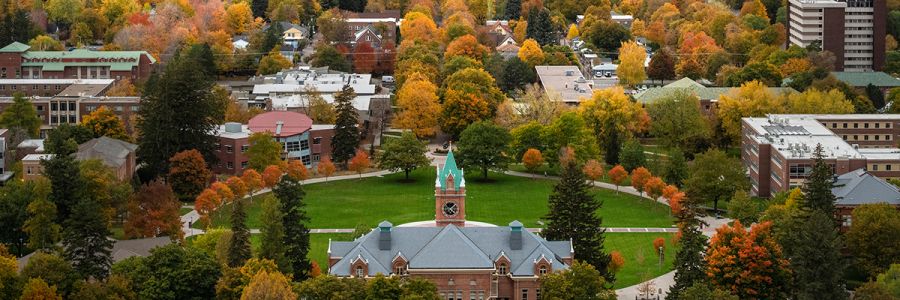Unparalleled Investment, Unwavering Generosity: During the 2000s, the University’s Giving Community Remained United Through Uncertain Times
Donors supported UM’s first $100 million campaign at the start of a new century marked by political and economic instability.
September 24, 2025
This story is part of “75 Years of Impact,” a celebration marking the University of Montana Foundation’s 75th anniversary. Throughout the year the Foundation will share stories illustrating the profound impact of donors’ philanthropy at the University of Montana across the decades. To learn more visit SupportUM.org/UMF-75.
As the calendar turned from the 1990s to the new millennium, the world unexpectedly found itself thrust into significant turmoil.
The 2000 stock market crash — brought on when the “dotcom bubble” burst — and the attacks of September 11, 2001, signaled the dawn of a new global landscape: one fraught with uncertainty for Americans and people worldwide. By 2008, the housing crisis had triggered the deepest economic recession since the Great Depression in the United States.
Simultaneously, innovations in technology were rapidly reshaping society and how people communicated. Flip phones became smartphones, while websites and social media began to replace traditional sources of news and information.
Confronted by the challenges of the new century, the UM Foundation and its donors responded with unwavering enthusiasm. The University’s growing community of supporters, alumni and friends seized the opportunity to help develop new pathways to prepare students for an emerging globalized economy and a working world defined by the digital revolution.
UM leadership continued to educate prospective students about the value of investing in their futures and, through purposeful contributions to the Foundation, donors united to provide students with the resources and tools needed to reach their full potential.
This included another record-breaking campaign, which set even higher standards of support for scholarships, faculty positions, academic programs and campus facilities.
The vision and generosity of dedicated individuals, families, foundations and corporations during this time not only preserved the University’s momentum but also broadened its reach across the state and beyond.
‘Invest in Discovery’: UM’s First $100 Million Campaign
In 2002, the Foundation launched the quiet phase of “Invest in Discovery — Connecting People, Programs and Place,” a comprehensive, five-year, $100 million-goal campaign that would impact nearly every aspect of life at the University.
It was the Foundation’s third such campaign in as many decades, following two earlier efforts that each redefined expectations for what philanthropy could achieve — raising $7.8 million (from 1984 to 1986) and $71.4 million (from 1992 to 1997), respectively.
“Invest in Discovery” would be the biggest campaign yet.
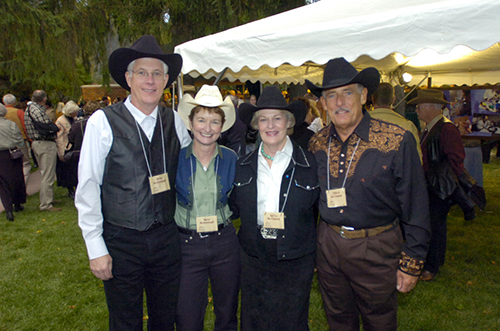
Like its predecessors, the campaign would unite donors to deliver lasting assistance across a diverse range of needs. Fueled by energetic volunteers and deep personal commitment from the Foundation’s Board of Trustees, the campaign not only galvanized donor enthusiasm, but sparked widespread community engagement around UM’s mission.
By the time of its public announcement in October 2005 — during an event at the University Center featuring renowned author and UM alum James Grady, former Governor Brian Schweitzer, National Campaign Chair Deborah Doyle McWhinney and former University President George Dennison — “Invest in Discovery” had already inspired $72 million in giving.
The campaign invited donors to “look beyond the horizon,” pledging vital funds to keep UM students and faculty at the forefront of innovation and to prepare future professionals to launch meaningful careers and become leaders in their communities.
During its five-year run, “Invest in Discovery” inspired an unprecedented wave of private investment from every region of the country, including 16 gifts of $1 million or more. Contributions came in from all 50 states and nine of 10 Canadian provinces. Nearly 30,000 total donors contributed, including more than 17,000 alumni and almost 13,000 who were giving to UM for the first time.
When the campaign wrapped at the end of 2007, it had raised $131 million — eclipsing its original goal by $31 million.
“It gives you goose bumps when you realize how passionate people are about wanting to do something that leaves a legacy of excellence," McWhinney said in a news release.
The “Invest in Discovery” campaign became a defining moment for private giving at UM during the 2000s. Its many successes would resonate throughout the decade.
Extending a Hand: Record Support for the Next Generation
The total of $131 million inspired by “Invest in Discovery” included $57 million to uplift academic programs and $26 million dedicated to student support.
The impact was sweeping: creating or enhancing 486 undergraduate scholarships as well as 79 graduate fellowships.
This landmark success was another powerful step in the long tradition of donors rallying to make student support a central focus of their giving. Their generosity expanded access to higher education for both undergraduate and graduate students, while also providing resources that helped sustain the University's standing as a premier institution headed into the 21st century.
The impact of this assistance was reflected not only in record-breaking fundraising totals, but in the personal stories of students whose lives were transformed as a result.
“I am the first person in my immediate family to attain a college education,” said Emily Joy, then a senior from Whitefish studying liberal arts and Spanish, in a testimonial featured on the “Invest in Discovery” website. “I have worked full time while attending school and value the scholarship I received as an indispensable resource that allows me to balance my time between work and school. Without it, I would not be able to achieve my highest goal.”
Another $11 million provided direct faculty and staff support. Along with general faculty assistance, several professorships and faculty positions were established during the “Invest in Discovery” campaign, including:
- The John J. Craighead Endowed Chair is named for renowned scientist John Craighead, who led UM’s Cooperative Wildlife Research Unit during a 25-year career at the University. The endowed chair enables world-class experts to teach and conduct research in UM’s highly regarded wildlife biology program.
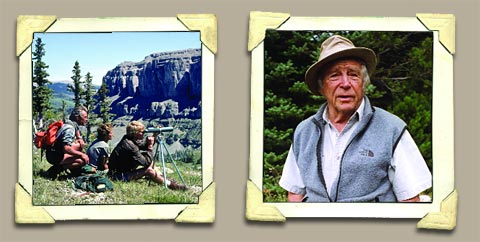
- The T. Anthony Pollner Distinguished Professorship in Journalism — named for a '99 journalism alumnus and former Kaimin student employee — brings renowned professional journalists with diverse backgrounds to campus to mentor and share their experiences with student journalists.
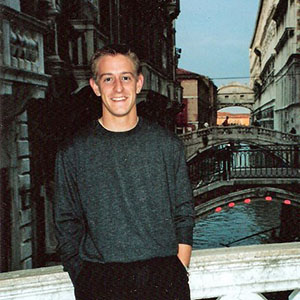
- The William Kittredge Visiting Writer, named for Montana literary legend William Kittredge, invites visiting writers from around the nation to teach environmental and nature writing to graduate students.
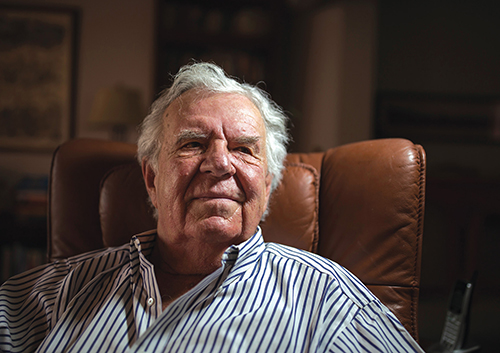
Building a Better Future at UM
Don Anderson Hall
In a report to the Foundation’s Board of Trustees in March 2001, School of Journalism Dean Jerry Brown touted the program as among the nation’s best, regularly ranked alongside schools with larger enrollments and more robust funding.
UM’s journalism school was especially well known for its practical training for future professionals — and UM’s student newspaper, the Montana Kaimin, was consistently ranked as one of the Top 20 college papers in the country.
But the journalism school’s longtime home — 1930s-era Stone Hall — was overcrowded and ill-equipped to meet the technological needs of the ongoing digital media revolution. If the program was to keep up its reputation for excellence, a new building would be necessary, Brown said.
An updated journalism building became a top priority of “Invest in Discovery,” and donors stepped in to contribute 75% of its $14 million cost.
Don Anderson Hall, a five-story, 57,238-square-foot building named for the media executive who organized Lee Enterprises’ purchase of several Montana newspapers from the Anaconda Copper Mining Company in the late 1950s, opened in May 2007.
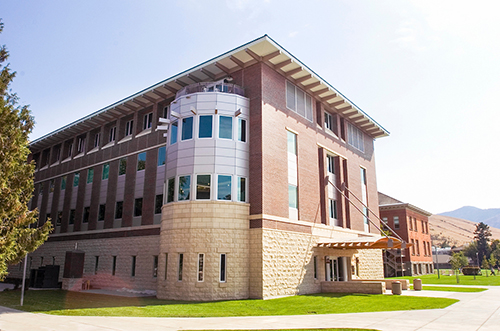
Major donors included Anderson’s daughter Sue Anderson Talbot and son-in-law John Talbot (a former Missoulian publisher), who were also recognized for their volunteer organizational efforts. Former Lee Enterprises President Lloyd Schermer and his wife Betty gave the largest personal contribution to the building. The family of T. Anthony Pollner made a gift for a suite of offices for the Kaimin in his memory.
The new building united the journalism school’s print, photo and broadcast programs under one roof. It also introduced major technological upgrades to give students cutting-edge training in modern news gathering.
Don Anderson Hall was just one of several crucial facilities upgrades funded by $37 million raised for facilities projects during the “Invest in Discovery” campaign.
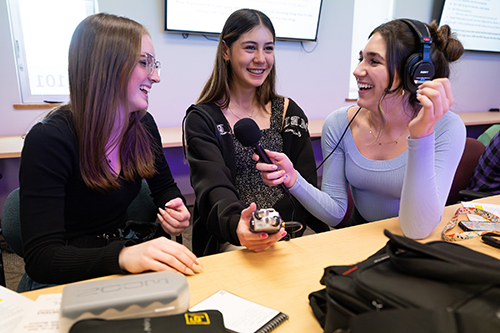
Phyllis J. Washington Education Center
The largest single gift ever given to UM at the time resulted in a new building that is the “inspirational heart for education in Montana.” That was according to Roberta Evans, then dean of the Phyllis J. Washington College of Education. The Phyllis J. Washington Education Center opened its doors in September 2009. The $15.1 million project was 90% funded by private donors and brought the latest educational tools, high-tech classrooms and other amenities to the next generation of Montana educators.
The Center also provided a new home for the Learning and Belonging School, which has served Missoula-area children and UM students for more than 60 years, providing quality services for children and pre-service clinical experiences for future teachers. Evans saw veteran alumni educators tour the new building and come away misty-eyed. “They never thought they would see the day their alma mater was elevated to this stature,” she said. “It has generated a strong sense of professional identity for teachers across Montana.”
The Dennis and Phyllis Washington Foundation and the Alice Lee Lund Charitable Trust made subsequent leadership gifts of $10 million and $5 million, respectively, to expand space for early childhood education, counselor education and the Montana Digital Academy. Several other leadership donors supported an addition to the Phyllis J. Washington Education Center, which opened in spring 2019.
Other New and Renovated Facilities
Other new or renovated facilities that benefitted from private philanthropy during the decade included: The Law Building, a biomedical research facility and science learning complex addition to the Skaggs Building and the Grizzly Athletics’ Hall of Champions.
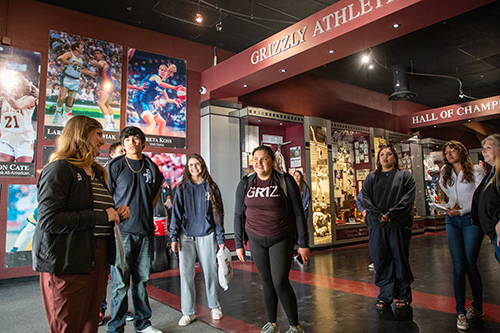
Thanks to a generous gift from the Terry and Patt Payne family, construction began on the 30,000-square-foot Payne Family Native American Center— the first-of-its-kind facility representing the 12 Native American tribes in Montana — which opened at the start of the next decade.
A Decade Defined by Steadfast Commitment
Despite the turbulence of the 2000s, UM’s philanthropic community stood strong, bonded by a shared commitment to building a brighter future for Montana and beyond.
As McWhinney put it: “Hand in hand we continue to nurture and maintain the University of Montana as a place of learning. A place of discovery. A place of influence, nationally and globally.”
To learn more about the Foundation’s 75th anniversary and read feature stories spanning the decades, please visit SupportUM.org/UMF-75.
The information on this website was compiled from a variety of sources, including records held by the UM Foundation and the Maureen and Mike Mansfield Library Archives and Special Collections. The UM Foundation has made its best efforts to provide an accurate representation of events, people, entities, names, activities and data. However, the information presented should not be considered a definitive historical record.
